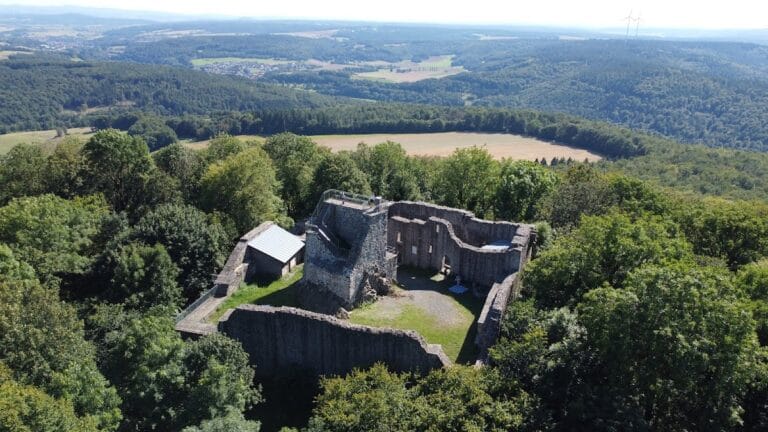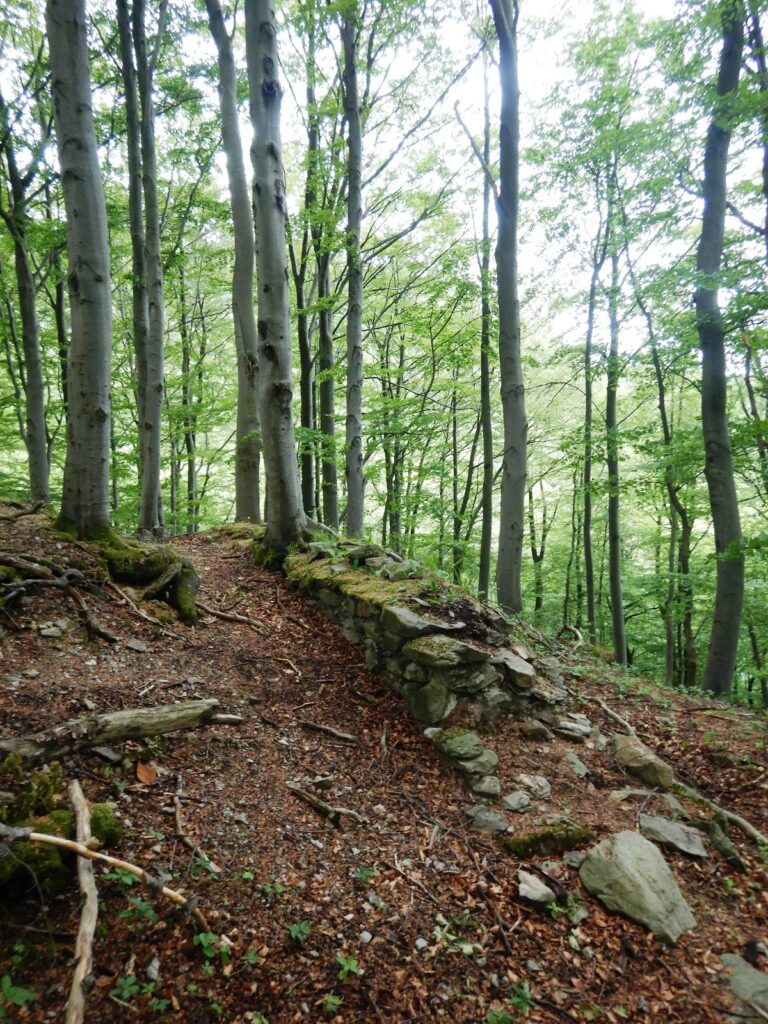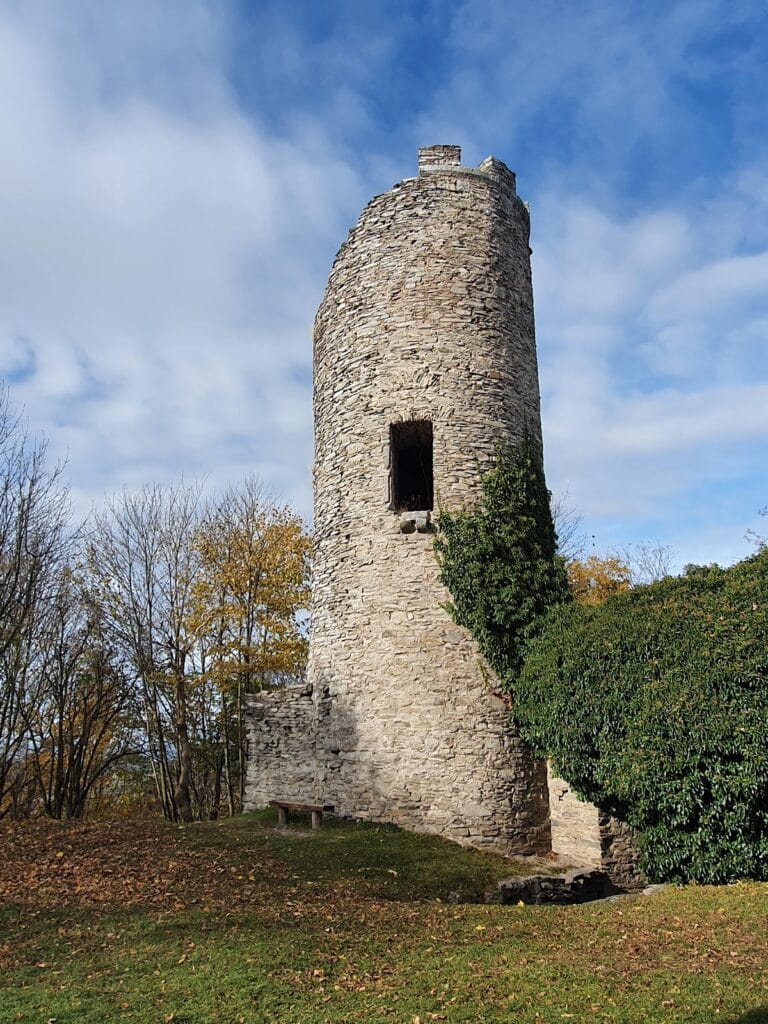Burg Wartenberg: A Medieval Castle Ruin in Germany
Visitor Information
Google Rating: 4.6
Popularity: Low
Google Maps: View on Google Maps
Official Website: www.gemeinde-wartenberg.de
Country: Germany
Civilization: Unclassified
Remains: Military
History
Burg Wartenberg is a medieval castle ruin situated within the municipality of Wartenberg in Germany. It was originally built by members of the German nobility during the early 13th century.
The earliest confirmed construction of the castle began around 1220 under Friedrich von Angersbach. After establishing the fortress, Friedrich adopted the family name von Wartenberg, linking his lineage directly to the castle. The fortress was first recorded in 1232 under the name “Wartinberg,” later appearing as “Warthenberg” in documents from 1293. The castle’s location on a rocky hill spur overlooking the Lauter river allowed it to serve as a defensible seat for the von Wartenberg family. This noble house acted as ministeriales, unfree knights appointed by the Benedictine Abbey of Fulda, and held military and administrative duties in the region. As vassals of the Counts of Ziegenhain, the von Wartenbergs controlled a small lordship including the nearby town of Lauterbach and surrounding villages, exercising legal and executive powers within their domain.
Archaeological research has uncovered traces of earlier human presence at the site, dating back to the Roman period around 200 AD. Two storage pits from this era were identified beneath later layers. In addition, remains of Carolingian-era fortified farms from around 700 AD have been found, supporting the possibility that the area corresponded to the settlement named “Ungefures” in a boundary description dating to 812.
The castle’s existence was interrupted by conflict in 1265 during a feud involving local nobles. Abbot Bertho II of Fulda led an assault against rebellious families allied with the Count of Ziegenhain, including the von Wartenbergs. In this confrontation, Burg Wartenberg was destroyed and never rebuilt. Following the loss of their stronghold and territorial claims, the von Wartenberg family gradually declined, becoming extinct by the late 14th century.
Archaeological excavations began sporadically in the early 19th century, with more systematic work conducted by Karl Maurer between 1938 and 1940. These investigations solidified understanding of the site’s long history and phases of occupation. Further studies, including a 2005 magister thesis, analyzed finds such as metal artifacts to confirm construction and destruction timelines as well as aspects of the castle’s brief period of use and later abandonment. Items recovered from the site, including coins and weapon fragments linked to broader medieval historical events like the Crusades, have been displayed in local and international exhibitions.
Remains
Burg Wartenberg is positioned at an elevation of 268 meters on a narrow rocky spur surrounded on three sides by a sharp bend in the Lauter river, a natural defensive feature typical of spur castles. Its layout centers on a core hilltop enclosed by an inner ring wall, with various buildings arranged within this protected courtyard. Archaeological evidence suggests the presence of at least four houses clustered on this elevated core.
The castle’s oldest surviving structure is the bergfried, a tall main tower that served as both a lookout and a stronghold. This stone tower, constructed around the initial building phase in the early 13th century, has undergone partial restoration to stabilize and reveal its appearance. Within the castle’s enclosure, the inner ring wall surrounded the central buildings providing defense, built from stone foundations combined with clay mortar—a technique also observed in earlier Carolingian farm structures unearthed beneath the castle remains.
Additional architectural elements include the outer gate complex, reconstructed to convey the castle’s former point of entry, and a bakery oven located near the forward palas (the residential or representative building of the castle). Cellar remains beneath the palas have also been identified and preserved, offering insight into storage and daily functioning within the fortress. Today, sections of walls and foundational remains remain visible, reflecting both medieval construction methods and later conservation efforts. A commemorative stone plaque inside the bergfried honors those involved in restoration work.
Excavations revealed a rich assortment of artifacts across the site, ranging from coins to personal and military objects. Among these finds are silver bracteates and half bracteates (types of thin, stamped medieval silver coins), two-sided silver pennies, and a gilded bronze plaque about 7 centimeters high bearing the coat of arms of the von Wartenberg family. This heraldic design features a white diagonal stripe (bend) on a blue or green background, accompanied by a golden star and exemplifies the castle’s noble identity. Other discoveries include glass bowls, Saracen arrowheads hinting at contact with Crusader campaigns, pilgrim flasks used for carrying holy water or oil, and a small figurine known as the “Wartebachmännchen,” thought to have served as a cultic object or toy. Additional items such as votive offerings, a chest key, silver bells, amulets, neck rings, and spiral pins provide further testimony to the castle’s cultural and social environment.
The site is recognized today as a protected cultural monument and remains the symbolic landmark of the municipality of Wartenberg. The community has embraced the castle’s legacy by adopting its name and heraldic imagery following administrative reforms in the 20th century.










